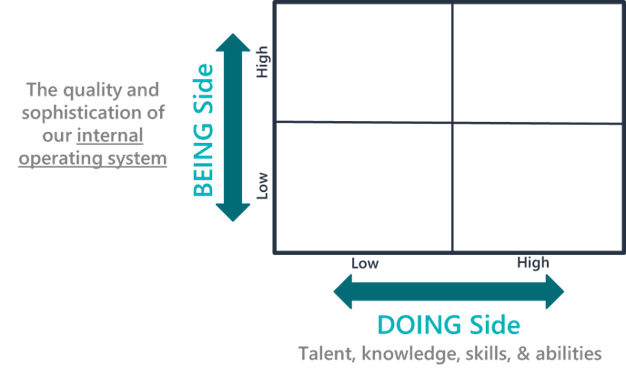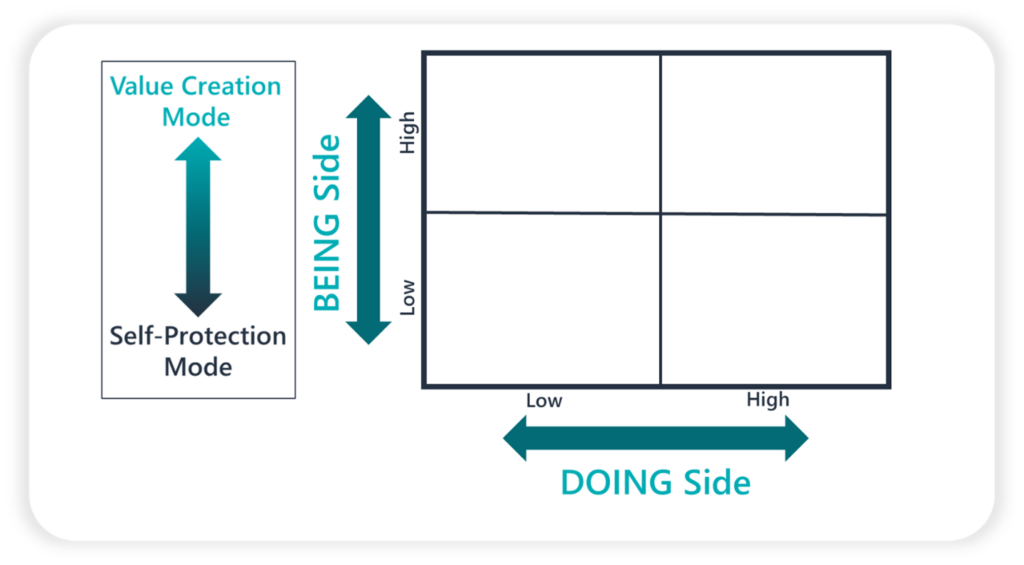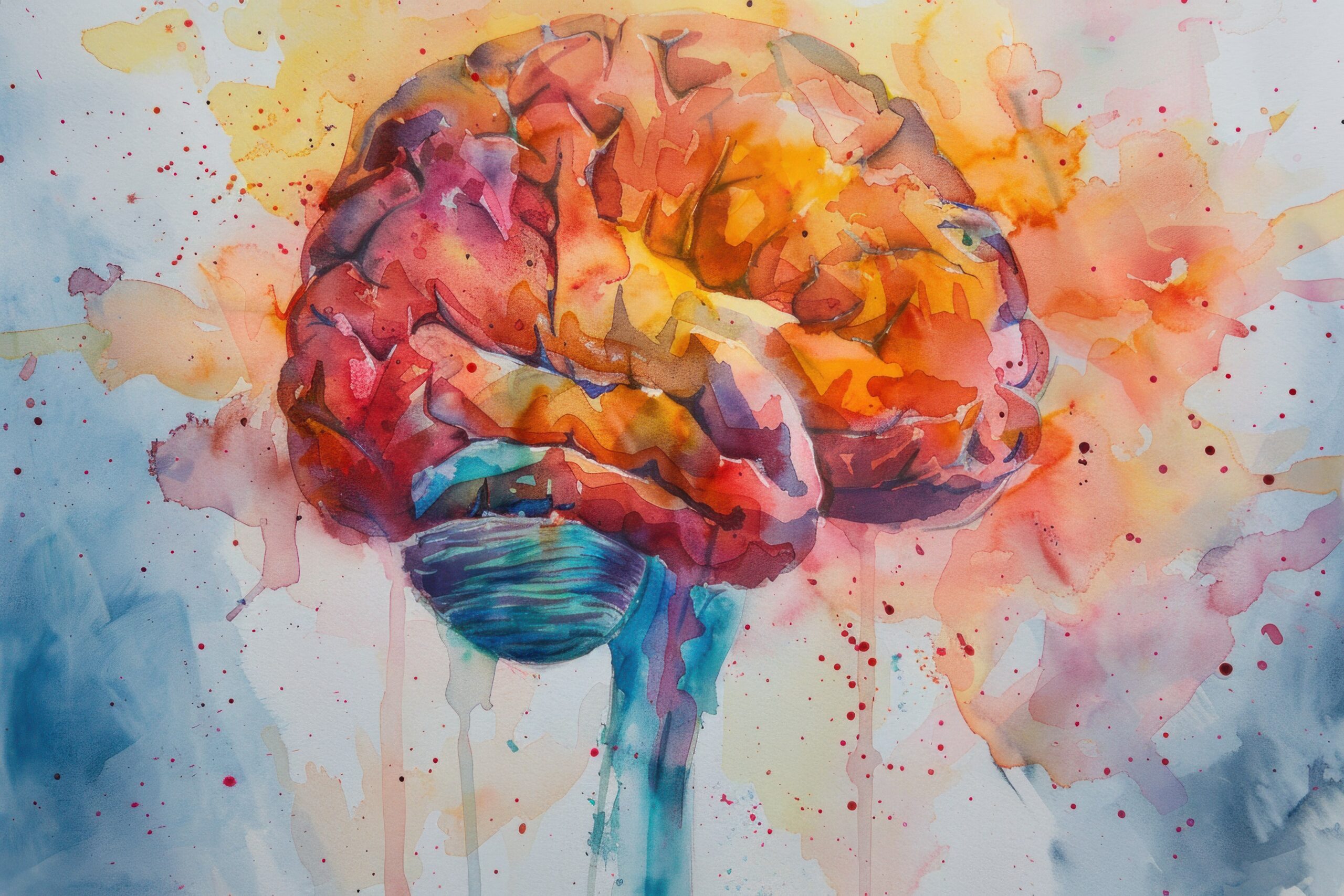We have two different sides to ourselves.

Our DOING Side
We have a DOING Side, which represents our level of talent, knowledge, skills, and abilities. This represents how many apps you have downloaded on your computer. The more specialized your apps, the better you will be at accomplishing specific tasks.
Most people are quite “in touch” with their DOING Side. We know if there are few people more skilled or talented than us in a certain area or more people. If there are few people, that suggests we are further out along our DOING Side.
We Have a BEING Side & It is Core to Who We Are
We also have a BEING Side. This side is more amorphous. And most people:
- Are not even aware that they have a BEING Side, or
- Are not clear on how sophisticated their BEING Side is.
Despite our general disconnect from our BEING Side, our BEING Side is plays a much more pivotal role on the type of person, leader, parent, friend, etc. we are.
In fact, I commonly state that our BEING Side plays a huge role in how much we get out of our DOING Side. And, we can all point to people like Tiger Woods, Bill Clinton, Bobby Knight, etc. who are very gifted on their DOING Side, but low altitude on their BEING Side has gotten them into trouble.
What Exactly is Our BEING Side?
Let me try to explore this question through a few different, yet interrelated perspectives:
Perspective #1
Let me start answering this question by identifying characteristics of people who are higher on their BEING Side. People higher on their BEING Side:
- Possess wider windows of tolerance
- Are more regulated and in control of themselves
- Are more emotionally intelligent
- Are more patient
- Are more humble
- Are more empathetic
- Are more balanced
- Are less reactive
Perspective #2
When we identify some of these characteristics, it becomes easier to connect with two ideas.
The first idea is that people higher on their BEING Side have a more refined and sophisticated internal operating system (remember our DOING Side is about the apps we have downloaded on our system).
The second idea is that our BEING Side and our internal operating system is directly connected to our nervous system. Stated differently, people with a lower-quality and higher-strung nervous system have more narrow windows of tolerance, are less regulated, less patient, less balanced, and more reactive.
I have written in the past about how one way to gauge our altitude on our BEING Side is how open and receptive we are to feedback.
Perspective #3
I have also discovered another way to think about our altitude along our BEING Side:
- Those low on their BEING Side have elements of their internal operating system that is wired for self-protection
- Those high on their BEING Side have an internal operating system that is wired for value creation
Why are some people reactive, have more narrow windows of tolerance, are impatient, unempathetic, etc.? It is because their body’s nervous system is protecting them from something for some reason.
Something that has helped me understand this perspective is learning the neuroscience behind psychological trauma. Neuroscience has essentially discovered that the more trauma one experiences, the more their body’s internal operating system become more wired for self-protection. It is our nervous system’s default response to trauma because our body’s nervous system wants to protect us from current and future pain and suffering. That makes sense, right?
To make this more applied, I commonly work with leaders who micromanage, stick to what has worked in the past, struggle to be innovative, don’t take feedback well, fail to look into the future, are problem-avoidant, and who fail to take initiative. Why do they struggle with these things? (And, I think most of us struggle with at least one of these things.) It is ultimately because they have some self-protective wiring, suggesting a lower altitude along their BEING Side.
As I alluded, all of us have some self-protective wiring, it is just that some of us have a lot more of it than others.
This is tricky because people who have self-protective wiring feel like their wiring is “right” and “good” because it is serving an important purpose: It is keeping them safe. But, what they generally fail to appreciate is that our self-protective wiring holds us back from creating value.
Ultimately, I hope this perspective helps you get more in touch with your BEING Side.

Which of these three perspectives helps you better understand and connect to this idea of our “BEING Side?”










